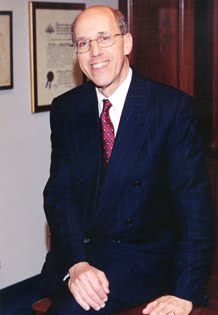
Joan Rivers
My Monday post regarding the settlement of the Joan Rivers wrongful death case was meant to be a two-parter. Part one to laud the lawyers and part two to write about the injustices of our current (and ancient) wrongful death statute that dates to 1847.
New York used to be progressive, with the first in the nation wrongful death law that was designed to protect injured railroad workers. There was no common law claim for wrongful death. Since an injured worker needed to be compensated, perhaps for life, but a dead one was worthless in the eyes of the law, saving the life of the worker was, ahem, detrimental to the profits of the railroad business.
In fact, not only wasn’t there a wrongful death cause of action, but even a claim for personal injuries (the pain before the death) did not survive the death of the injured person (or of the tortfeasor). It just evaporated. It was better (for the railroads) to kill workers than injure them.
Thus, the 1847 legislation. (You can read the history of it all in Grant v. Guidotti.)
But while once at the forefront of progress, New York is now a laggard in the law’s development. It has not been updated in 170 years. The law provided back then, and continues today, that the survivors may only collect “pecuniary” loss, basically meaning the wages that others depended on. And if your family member that was killed by the negligent conduct was not the family breadwinner, but happened to be an infant, homemaker or retired?
Sorry, Charlie. Children, retired seniors and homemakers have no “value” to the New York Legislature. And disaster-struck families have been told by lawyers, for generations now, that they won’t get to hold the tortfeasors responsible for their grief. They are on their own. You can blame the Leg.
Before I had a chance to fully write that piece though, Marc Dittenhoefer dropped a long comment into that first post on that subject, dealing with the Joan Rivers case. So I just asked Ditt to expand on it a bit and presto, a new guest post on the very topic I wanted to cover.
Take it away Ditt:
——————————
I applaud the outcome in the Joan Rivers case and join in sending kudos to Ben Rubinowitz and his team for the excellent job they did on all counts. However, results like this one always give me pause in that they highlight a great inequity that still bedevils our system.
Joan Rivers endured no conscious pain and suffering, had no impending fear of death or disaster, was the legal and obligatory supporter of no one, and was worth tens – perhaps scores – of millions of dollars at the time of her death. By traditional NYS legal measures of recovery, this case should have limited value. But Joan Rivers was rich, famous, powerful, beloved and white. Ka-Ching!
Now let’s think of an unheralded Ms. Gonzalez, or Johnson, or Yee; with several children dependent upon her for support; with days, weeks even months or years of conscious pain and suffering; and with a dread of impending doom all about her due to someone else’s fault in causing her death. THAT case doesn’t settle so fast, nor for anywhere near sum likely received here.
The reason? In New York, wrongful death damages are measured by two things:
(1) conscious dread, pain and suffering of the decedent, and
(2) monetary loss to those legally dependent upon the decedent for support.
Joan Rivers went to sleep fully well expecting to wake up shortly, felt no pain and suffered not at all, and left behind as an only survivor a fully grown, emancipated and high-earning woman in her own right who stands to inherit generously from her mom’s Estate. But for her fame and public profile, the measure of damages here would be negligible by current legal standards.
But an unknown single mother of 3 with no special skills or educational advantages, earning modest wages and perhaps even lingering in a death-spiral of pain for months on end? Who also happens to be the family matriarch giving love and guidance to those within her household?
Defendants would be in no particular rush – nor in the grips of any particular generosity – to amicably resolve that case to the benefit of the motherless children in dire need of whatever recovery their lawsuit might hold. Those moms do not make the headlines: no insurer seeks to avoid bad publicity by paying quickly or generously for them. While the Rivers’ settlement is celebrated by the tabloids with speculation of an 8-figure sum, the lesser recoveries of the “ordinary” litigants are decried as “runaway” results when the press pays attention to them at all. Yet the self-same interest of improved public health is served in both instances.
Fame has its privileges, all right. But NY’s laws need to recognize that:
(1) the current measure for damages in a wrongful death scenario is woefully dysfunctional and out of date, and
(2) “regular” folks need to be afforded the same quality of justice that the rich and famous get, even if their cases do not alway make the papers.
“Wrongful Death” reform is long overdue.




